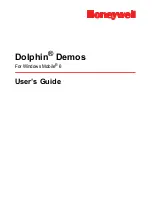
Set clauses define how the attributes are modified for matching routes. The set
conditions apply only to routes that pass all the match conditions (or a route map
with no match conditions). When a route passes all the match conditions, the router
software applies all set conditions. You issue
set
commands to define the set
conditions for a route map.
You assign a unique string called the map tag to identify each route map. You can
have multiple
instances
of a route map, where each instance consists of a different
group of clauses. Each instance is identified by a sequence number. When you apply
a route map, the routing protocol evaluates routes against the instance of the route
map with the lowest sequence number. If the routes pass all the match conditions
specified in the lowest-numbered instance, and if all
set
commands are successfully
applied, no other instance of the route map is considered. However, any routes that
do not pass all the match conditions are evaluated against the next instance of the
route map. For example, suppose you create two instances of route map boston5,
one with sequence number 10 and one with sequence number 25. When you apply
boston5, routes are evaluated first against instance 10; any that do not match are
evaluated against instance 25.
When you apply a route map, you specify the
permit
or
deny
keyword:
■
If you specify the
permit
keyword, routes that match the route map are accepted,
forwarded, or redistributed. Routes that do not match the route map are rejected
or blocked.
■
If you specify the
deny
keyword, routes that match the route map are rejected
or blocked. Routes that do not match the route map are accepted, forwarded,
or redistributed.
A route map must have at least one match clause or one set clause. If you have no
match clauses, all routes match the route map, and the set conditions apply to all
routes. If you have no set clauses, no action is taken other than that specified by the
permit
or
deny
keyword.
Route Map Configuration Example
Consider the network structure shown in Figure 1 on page 6. Suppose you do not
want router Boston to receive any routes that originate in or pass through router
Chicago.
Route Maps
■
5
Chapter 1: Configuring Routing Policy
Summary of Contents for IP SERVICES - CONFIGURATION GUIDE V 11.1.X
Page 6: ...vi...
Page 8: ...viii JUNOSe 11 1 x IP Services Configuration Guide...
Page 18: ...xviii Table of Contents JUNOSe 11 1 x IP Services Configuration Guide...
Page 20: ...xx List of Figures JUNOSe 11 1 x IP Services Configuration Guide...
Page 22: ...xxii List of Tables JUNOSe 11 1 x IP Services Configuration Guide...
Page 28: ...2 Chapters JUNOSe 11 1 x IP Services Configuration Guide...
Page 138: ...112 Monitoring J Flow Statistics JUNOSe 11 1 x IP Services Configuration Guide...
Page 286: ...260 Monitoring IP Tunnels JUNOSe 11 1 x IP Services Configuration Guide...
Page 312: ...286 Monitoring IP Reassembly JUNOSe 11 1 x IP Services Configuration Guide...
Page 357: ...Part 2 Index Index on page 333 Index 331...
Page 358: ...332 Index JUNOSe 11 1 x IP Services Configuration Guide...
















































